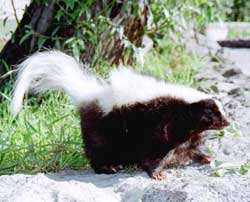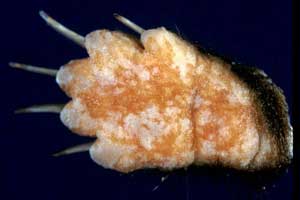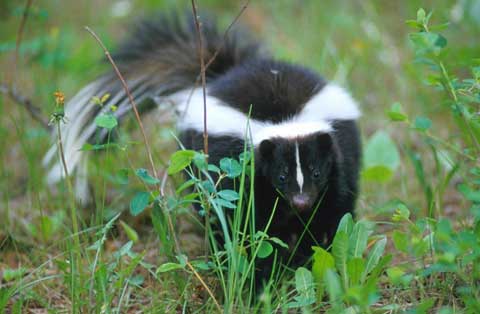Across a vast region from Canada to northern Mexico lives a rather unique animal, commonly known as the striped skunk, scientifically named Mephitis mephitis. These American skunks typically inhabit forests or expansive grasslands.
 |
|
(Image: lenzoo) |
They are quiet creatures that appear gentle and prefer to live in harmony with one another. It is common to see multiple female skunks sharing their “territory” and even cohabiting in the same den. The den of Mephitis mephitis is underground and features various “small rooms” and multiple entrances. Occasionally, skunks will occupy dens dug by badgers, foxes, raccoons, or other animals.
During the day, they stay below ground, hidden under piles of wood or stone. Nighttime is their prime hunting time when they wander in search of small animals, insects, bird eggs, carcasses, and even fruits to eat.
In winter, they do not hibernate but often gather together in their dens. It seems they recognize that being in close proximity offers more warmth. Although they do not hibernate, they become less active during this cold period.
From February to March is the mating season for Mephitis mephitis. “Mating activities” usually take place in dens, rather than being displayed openly like many other animal species. After a gestation period of 59 to 77 days, a mother skunk gives birth to a litter of about 5-8 young in a nest lined with plant materials.
The physical appearance of this skunk is distinctive:
 |
|
Skunk paws (Image: afip) |
Their bodies are robust, with small heads, small ears, and short legs. Their feet have five toes, each equipped with claws. They have long black fur, highlighted by a white stripe on their forehead. Two additional white stripes extend from behind their neck down the sides; their tails have some white fur, particularly at the tip. Their body length is about 0.5 meters; the tail measures around 0.4 meters; and they weigh approximately 6 kilograms.
When a skunk stomps its front feet and growls, it signifies that it is angry and wants to warn that it is about to spray a foul-smelling liquid, as it possesses sweat glands that secrete an extremely unpleasant substance.
These “sprayers” can spray this liquid over 6 meters and hit their target accurately within 3 meters, always aiming directly at the face of the threatening animal. This liquid is a potent weapon, as its odor can cause temporary suffocation for the opponent, and if it gets into the eyes, it can render the enemy completely blind for a time. However, they never use this foul smell against rival skunks but reserve it for other species.
The contrasting colors of their fur make it easy for predators who have previously been hit by their spray to quickly recognize the silhouette of a skunk and steer clear.
Mephitis mephitis can also pose a danger to humans, as they can carry rabies. Humans can contract the rabies virus through bites, but cannot be infected by this virus if sprayed with their liquid.

(Image: fcps.k12.va.us)


















































